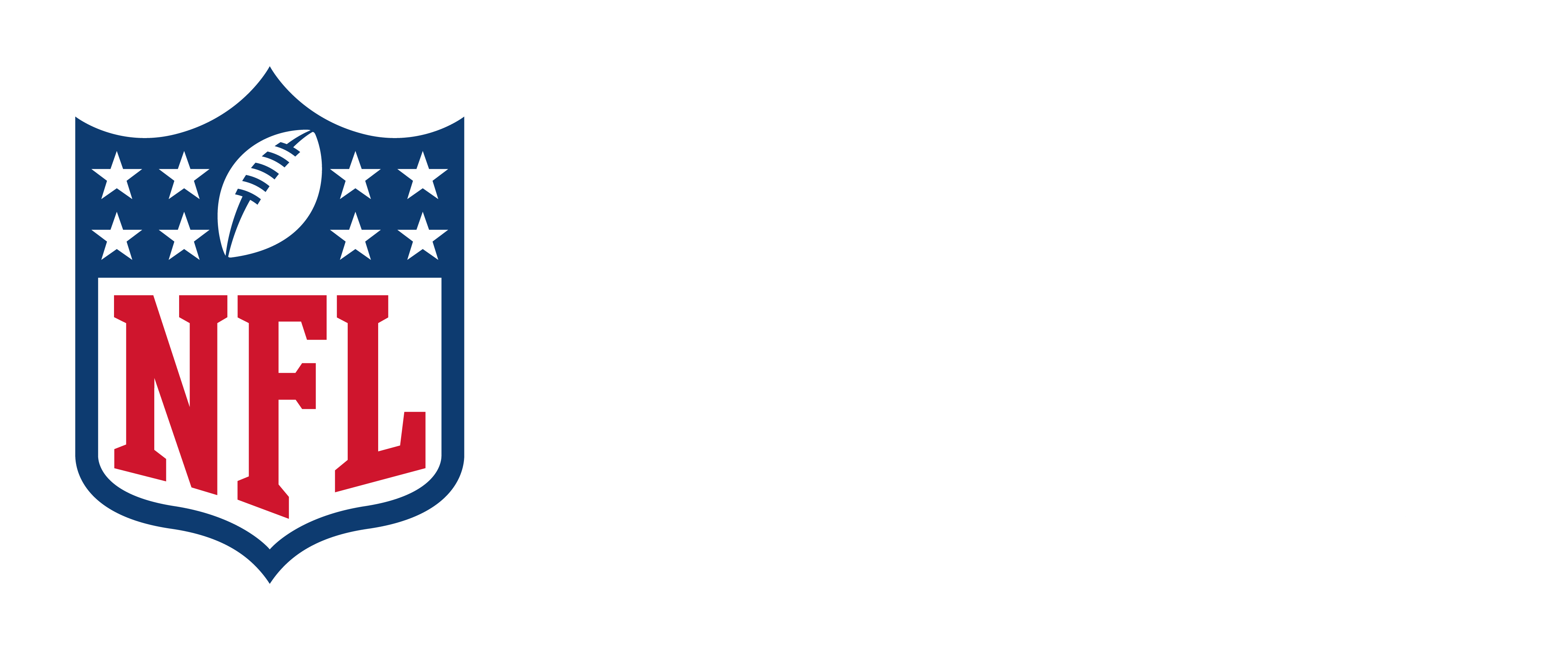The NFL hosted a health and safety-focused media briefing on March 29, 2022 at the 2022 Annual League Meeting in Palm Beach, Florida.
SPEAKERS:
- Dr. Allen Sills, NFL Chief Medical Officer
- Jeff Miller, NFL Executive Vice President Overseeing Player Health & Safety
Miller: Good afternoon, everybody. Dr. Sills and I just finished a health and safety briefing with full ownership and voted on a resolution, which I'll get into. The primary topics that we covered were overall injuries. We took a look at the 17-game season. We looked at concussions, of course, and this year saw the fewest number of concussions we've seen since we've been keeping records over the last seven or eight years, including fewer concussions in the 17-game regular season than we've seen in previous the 16-game regular seasons, which obviously is good news. We also talked to the ownership about overall head impacts and looking for ways to decrease those in addition to helping to drive down the number of concussions overall and ways in which we intended to do it.
We talked at length about the preseason, and the number of injuries, especially, lower extremity injuries that we see during the preseason and ways to change the preseason structure, the acclimation period, the contact integration period, so we can ramp the players up, train them to, hopefully, mitigate some of those injuries. We're seeing approximately 20 percent of all lower extremity injuries in the first 10 days or so of preseason practices, and those injuries recur. So, that's an issue that we want to focus on.
The votes that we took related to both those topics, both around the head impacts as well as to the preseason structure. Around the head impact, the owners passed a mandate to use the Guardian Cap for every training camp practice where helmets are worn for numerous position groups, up to the second preseason game for all teams.
The history for us on the Guardian Cap has been we funded that company with a grant, not an ownership stake, but a grant that we made to Guardian Cap, to improve the cap using NFL speeds, velocities, magnitudes of impacts, so that the device reflects the sorts of impacts that our players take, and they did that. We tested it in the laboratory and found that if one player is using the Guardian Cap during an impact with somebody who isn't wearing one, and they hit helmet-to-helmet, the person wearing the Guardian Cap saves about 10 percent of the force of that impact and if both players are wearing the Guardian Cap, then those savings are around 20 percent, which is substantial.
The Competition Committee, the Owners Health and Safety Committee, and now the full ownership endorsed a mandate for using the Guardian Cap for all offensive linemen, defensive linemen, tight ends and linebackers any day that helmets are worn, up to the second preseason game, because that's where we see the greatest concentration of helmet impacts during the course of the year. Larger rosters, more frequent contact practices, so we hope that there will be an injury savings there for our players.
As it relates to preseason practices, we also expanded the mandate around the use of sensors on players during preseason practices. Currently, all clubs that use sensors on their players during preseason practices must share that information with the league. We analyze that data, come back to them with insights that we have that led to some of the discussion around how to ramp players up better, those clubs that do things well versus those that may not. This resolution expanded that. All clubs must use sensors on all players during all practices and team activities during the preseason, which will increase the amount of data we get. Some clubs use them sporadically, as I mentioned. Now, they will be using them comprehensively. We will have more information from more practices during the course of the preseason as a result of the vote today. Those are the two big votes. Allen, you want to provide some color for some of that?
Sills: Good afternoon. First thing I would add is just that both of those areas of work, both the Guardian Cap and the sensor work, have been done collaboratively, not only with our engineers, but through the NFL Players Association engineers, and in conjunction with our Owner's Health and Safety Committee and our Competition Committee. We spent a lot of time talking with coaches, owners, general managers, engineers, our colleagues at the Players Association about these issues. I think those mandates, while they came out of our meeting, reflect all of that work that we've been doing together.
I think on the Guardian Cap, it's important to recognize, we're not looking at that as 'put a Guardian Cap on and go about head contact as if nothing were different.' Our aim is to be very clear; we want to reduce the amount, the intensity, and the timing of head contact. That is a goal that we've stated because, as Jeff mentioned, our concussion numbers have gone down. But we think that's not the full story. We recognize concussion as being on one end of the spectrum of brain injury. But we want to reduce avoidable head contact, we've been very public about that goal. The Guardian Cap is part of that effort, because as Jeff mentioned, it's about the intensity part but we still want to focus on reducing the amount and the timing of that contact. That'll be ongoing discussion that we'll have.
There's a lot of education that goes into both of those efforts. Education, again, with our players, but with coaches and staff about why that matters. What is the science behind the Guardian Cap? How has it been shown to be beneficial? What are those opportunities about reducing head contact? I think we've mentioned to you that we're now getting better able to quantify head contact. In the past, we had to use mouthguard sensors. Now we've got some artificial intelligence programs that our engineers are using, where they can look at video and literally quantify those impacts. We've got a lot more work to do there. But we're excited about being able to measure that because obviously, it's hard to change something that you can't measure. You can't hit a target that you can't see. We think that's going to be important, ongoing work.
One other thing about the helmets that we might want to mention, Jeff, was just a helmet poster came out last week. I think most of you were aware on Friday, I believe, that was released. There are six new helmets on that poster. Again, all these new helmets are falling up at the top of the top-performing group. We obviously have one newly prohibited helmet and six that moved down from the recommended to the not-recommended group. That just reflects that we're continuing to raise the bar, that the technology gets better and the performance gets better. Newer models that come in, perform better and we're obviously gratified to see that. Overall, our engineers say that it has been about nine times the rate of improvement annually since we started this back in 2015. That's done together with the Players Association, our engineers on both sides. There's a lot of excitement there. Helmets and Guardian Caps, but also just head contact overall, we want to be very intentional about that.
I think also in terms of educational efforts, Jeff mentioned the preseason sensor data. We're really focused on the preseason, and particularly on lower extremity injuries. The data tells us that about 20 percent of all of our lower extremity injuries happen during the preseason. That is a real opportunity because we believe many of them are preventable. We believe they're preventable by how we train, how we acclimate, how we ramp up. We've been beginning some meetings with our clubs doing one on one sessions, where we're meeting with coaches and others to really share that data, and as Jeff mentioned, look at those clubs that year-over-year have low injury rates versus those that have higher, what are those characteristics? There are some specific strategies that we believe again, how we returned, specifically focused on the first eight days, that's a really big period for us.
We believe there are a lot of injuries that can be saved in the first eight days, and many of those injuries will turn out to be recurring injuries. On each club, there tend to be two or three or four players who will have an injury that happens during that first eight-day period, and then it bothers the player the entire rest of the year. So that's also going to be a really big focus of ours.
Then two other areas I'll mention, one is the use of helmets and the use of helmet rule. I think you all have heard about that, there was some clarification of language around that. For us, that's just about continuing this effort to reduce avoidable head contact. Obviously, we work very closely with football operations, we work closely with our engineers, again, with the Players Association and others on that, but the purpose of that is again, to try to look for ways to reduce head contact through the rules piece of that.
Lastly, on special teams, I think a lot of you have heard us talk about special teams and the fact that we do still have very high injury rates there. It's something that we are actively working on. It turns out, it's a complex process. If you think about the punt play, for example, there are a lot of different areas that we see people getting injured different parts of the field, different parts of the play. We're working really aggressively with that, again, with our biomechanist, with coaches, with special teams, coaches, with our epidemiologists, medical experts, with the Players Association, trying to look at ways that we can intervene. So that is an ongoing effort. I think you'll hear us saying a lot more about that as we move forward, but it is something we certainly have in our sights, we didn't have a rule change passed here at this meeting. But that doesn't mean that that's not still very active.
One other active part of that is talking with other leagues. I think some of you are aware that there are other leagues that play football that have different variations of those plays. We're actively discussing with them, sharing data with them and trying to learn from those experiences so that we can inform our efforts there.
QUESTION: The Guardian Caps, are these something that you might consider mandating in games at some point if you find them effective throughout the preseason?
Miller: Well, I think that's exactly the point. We've had some clubs use them in some circumstances, certainly a lot of colleges – I think it's more than 100 and colleges use them – we need to see what the effect is, right? It's been a great collaboration with the Players Association, the Competition Committee, and others and using it, but we also need to get feedback to see how it worked over the course of the year. It certainly adds weight to a player and in training camp, that that may be material, so we're going to take a look at the experience of the players are going to take a look at the injury rate, we're going to measure the forces that they feel. So it will be, I think, an advance for the player health and safety, especially for players along the line, but also in part analysis to see how well they work and what we can learn from them going forward. And maybe there'll be further innovations in that space that will affect helmets overall or other protective devices.
QUESTION: You mentioned about the helmets improving yearly. Now that there are some position-specific helmets, how much does the NFL have a relationship with the manufacturers? How does that work? How much of the data that you collect goes to them? How much of the data that they collect goes to you?
Miller: It's a good question, Barry. And it's been it's been a very cooperative relationship. There's two paths that we follow to try to encourage helmet improvement. One is, as Allen discussed, we measure what happens on field and examine now, over the past several years on a frame-by-frame basis, more than 1,500 on-field concussions against 150 different variables. So, it's a humongous data set of information to understand how the concussions occur, what players what positions, what equipment they're wearing and a number of other variables. We share that analyzed information in general form with the helmet companies so they can build a better product.
In addition, the other stream is that we take that information, we share it publicly in some crowdsourcing initiatives. You've seen that over the years. One helmet company, VICIS, came from that, from a grant that we offered for those who could prove that they could build a better helmet. We just ran the end of our running the NFL Helmet Challenge, where three companies came in with a prototype with a helmet that better that was better performing in the lab than anything that is being worn on an NFL field right now. So they got that from the data that we shared with them about the impacts that happened on field in the work that we're doing. We don't take any equity in any of these companies, we make grants, we hope, if we can share, collect and share the information with these companies, they can keep building better products. And that model, balance point seems to be working because the rate of innovation has sped up.
QUESTION: I had a question about the sensors. Can you clarify a little bit more just elaborate a little bit more about where the sensors are? What is the data that's being collected? And then how have you maybe addressed any privacy concerns that may come from the players about what the data is and how it will be used?
Sills: We can both speak to that. So you know, the information that we're primarily interested in, obviously, you speed, space, direction, things like that, but then how that correlates with specific drills with video with injury rates. So it's a multi-dimensional look at everything that's going on, within the player within that environment. And, you know, as Jeff said, more data allows us more power of observation. And it's one of the unique things I think we have as a league because if an individual team looks at their own data, you know, you really don't have enough of a certain type of injury, maybe to make statistical significance of that particular dataset. So having it aggregated among the whole league gives us a power of scientific observation that we really wouldn't have otherwise.
Obviously, that's incredibly well protected. When I say the league, we're never seeing it, we're not looking at it, it's given to the engineers who work again, both from the league and the Players Association standpoint, and they anonymize it and aggregate it in ways, you know that, again, don't allow for individual identification. So we're not interested in you know, specific player A, what you're interested in, again, is trends, how that correlates with injury when injuries are occurring, and where the opportunities are there for intervention. So privacy is always important in every health data. But I think one thing about it, Lindsay, that I would say is, in the past, maybe people tended to view some of the performance information, like speed and distance and fatigue and load, is a sort of secret sauce – it was it was proprietary coaching information. We look at it as health and safety information. We look at it as important for health. Because if we can take those observations and make a safer training environment and ultimately prevent injuries, which is what we're trying to do, we think that's very, very relevant. That's where all clubs are going to benefit and all players are going to benefit. So I think it's a little bit of a different mindset change, but I think our clubs have viewed it that way and have been good partners with us in that and that's why the expansion of this is we're not trying to tell them how to coach or teach, but we want to better understand this injury burden that we have that arises out of the preseason and in how we can help clubs with managing the load.
Miller: Just add one real quick point, Lindsey, which goes to the Players Association. How the data is collected and managed is done in agreement with the Players Association. What privacy protections exist, who has access to it all those details were worked out in conjunction with the with the PA and of course they get the benefit as we do for making a healthier sport.
QUESTION: After the Super Bowl when Odell Beckham tore his knee on the artificial turf, there were some calls from players to ban turf. I know there have been studies that show lower extremity injuries are happening at higher rate on artificial turf. Would you ever recommend to teams that they make the switch from turf to natural grass, either for existing stadiums or in conversations with new stadiums?
Sills: So, it's a really complex question. Let me start out with what the data shows. We look every year at injury rates on different surfaces. In 2021, the injury rate overall for artificial turf and natural grass surfaces was almost identical, meaning there was no difference across all injuries. Now, with that being said, from a medical standpoint, it's a really complex issue because all artificial turfs are clearly not the same. All-natural grass surfaces aren't the same and even surfaces differ from week to week, depending on the season of the year, the uptake, the elements and things like that.
So, as we try to look at this, we're going several levels below just artificial versus natural. We're really trying to understand what are the properties of those surfaces that actually impact the injury rate and the performance rate. Remember, we could make a surface, for example, that would have almost no traction, and no one would ever have certain type of injuries. But they'd also fall down every other play, and people wouldn't be happy with that. So, it's a balance between performance and safety. Our engineers, the union, and the league's engineers, together, they're really working at better characterization of those surfaces, and they've designed a little mobile robot if you will, that can drive around surfaces and actually sample a bunch of against a bunch of different parameters. So, we're trying to understand how does hardness, how does coefficient of friction, how does depth of in-field, how do all of these factors play against injury?
Now, I'm going to take you one more level deeper, which is different injuries, different patterns, right? One surface that might be better for an ACL injury might be worse for a shoulder injury or concussion. So, as you look at what is the safest surface? You really have to balance all that out and it becomes quite complex, quite quickly.
All that to say, we're really looking at this, but we're digging into it at a much deeper level. By the way, we're not just doing it at game stadiums, but in practice fields as well, because players obviously spend a lot of time on practice fields. I think that the answer is not going to be in one versus the other. It's going to be the performance characteristics and obviously, those can be changed. Grass can be changed in certain ways to make it safer, as can artificial surfaces. As we gather more data, I think we can better help people understand what's the right surface for the right condition, you know, for the right use case, and I don't think it'll be just as simple as this one's good. This one's bad.
Long answer to a short question, but it's a really complex topic and it's one we spend a lot of time thinking about and talking about. Again, in conjunction with the engineers, with our field surface managers, and with players. This year, for example, there was a survey done about players of different surfaces and their impressions. That's also really important data, because we need that feedback to make sure we make a surface that can perform the way we want it to. So, what did I leave you?
Miller: I couldn't add to that if I wanted to. Is that more than you were asking for Jennie? We're going to do a podcast on that later if you'd like.
QUESTION: You guys mentioned that I think, did you say 20 percent of lower extremity injuries are taking place in the first two weeks of the..
Miller: Yeah, in the training camp period before the first preseason game.
QUESTION: Okay, so that being said, first of all, that covers a wide range of injuries, I guess. Secondly, I know, you didn't take any votes on that? I don't think there's any action yet, correct? But, if you were to consider doing something, broadly what are the kinds of things you could do other than just like, not have as much contact?
Miller: When I was talking about 20 percent, I meant to lower extremities like strains, pulls, hamstrings, calves, groin injuries, adductor strains, the kind of injuries that we see recur throughout the season. Let me walk you through how meaningful this is because we just talked to the competition committee about this in the owners.
If you look at – stick with me on the percentages, if one out of five lower extremity injuries occurs in that training camp period before the first preseason game, more than half of those players who suffer those injuries are on the 53 man roster. 25 percent of those players who make the roster will recur the same injury during the course of the same season and miss games as a result. So, every club on average – if you did the math – every club on average has a couple of guys who suffered an injury in that first week or so that don't actually recover from it fully throughout the course of the season. That's a problem for those players.
Allen's made the point and I think it's right, is that if we understood more how the teams and players practice during those first eight or so days, acclimation periods, and then when you add pads and contact integration periods, and the sensors will help us do this. We were able to share with the clubs, how to better prepare the players for the season, you would be able to avoid many of those injuries. So, the sensors are going to provide that information we're sharing with the clubs on a one-on-one basis, how we believe you should ramp players up. Inclusive of that is there's a level of individuality. We said to the owners a few minutes ago, if you're getting a player ready for the season, and he isn't going to play until the first regular-season game, then you can extend your acclimation period for him to make sure he's in really good shape, so you can avoid some of those injuries. So, some of those insights that the data permits, we believe are going to allow a lot of the clubs to avoid some of those recurring muscle strains, which happen on every single practice field at the beginning of training camp. It's a huge initiative and we're going to have a lot more detail over time, but we're going to have to go over the data it sends us.
I answered that in less than he did on the other thing just for the record.
QUESTION: I wanted to ask you a little bit more about the punt injuries. You had mentioned the risk factor there and I'm curious about that because the Dolphins among other clubs have talked about using some of their top players in a punt return role. So, what sort of injury rate are you seeing for punt returners in particular? What types of injuries? Are they more at risk than most other players?
Sills: Yes, as we look at the punt play, first of all, it has a higher rate of injury than other plays. I think we've shared that and the positions on the punt play that tend to be most injured are the gunners and the punt returner.
As I mentioned before, different mechanisms, different types of injuries but I think the injuries that we see that are obviously most striking are the lower extremity strains, again, hamstrings, quads, strains, ACL injuries, and of course, concussions. There are other injuries, but those would be the ones that rise to the top of the chart. So again, as you look at trying to mitigate those injuries, we're looking at all aspects from the structure of the play to the alignment to the rules of the play, to the training of the people who are on the field to the types of people who are on the field. That's why I said it starts to get complex quickly.
There is work to be done there and it's been a very interactive process. Again, our special team's coaches, our head coaches, our player association, everybody's really engaged in that conversation. You always want to make sure that your solution addresses the problem, right? It's easy to start making changes, but we want to make a change that the data suggests that it's leading us towards addressing the problem. So a complex play, but those are the types of injuries and where we're seeing them. And as I said, we're going to continue on that play. The fact that it's difficult doesn't mean we're not going to continue to address it. We're just not to the point of a specific rule change today.












